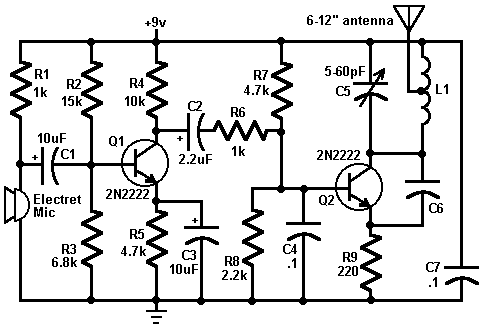I got to thinking about antennas the other day and realized that I don't really know how they operate from a circuit theory perspective. I've learned the basic theory about electromagnetic waves and how they are created by passing a current through a wire, that passing an ac current produces waves of the desired form/frequency, that kind of thing.
My question is this: In all of the circuit diagrams I see that contain an antenna, the antenna appears to just be left hanging off of the circuit; it's not connected to ground or the rest of the circuit. Like in this simple FM transmitter circuit:

When I look at actual devices that transmit signal via an antenna, there is usually just a single coaxial cable going to the antenna. So, how do they transmit? In order for the antenna to radiate the waves, it has to have current go through it, and if there is no path to ground(or whatever) through the antenna, how does any current get in there?
My question is this: In all of the circuit diagrams I see that contain an antenna, the antenna appears to just be left hanging off of the circuit; it's not connected to ground or the rest of the circuit. Like in this simple FM transmitter circuit:

When I look at actual devices that transmit signal via an antenna, there is usually just a single coaxial cable going to the antenna. So, how do they transmit? In order for the antenna to radiate the waves, it has to have current go through it, and if there is no path to ground(or whatever) through the antenna, how does any current get in there?
Last edited:
